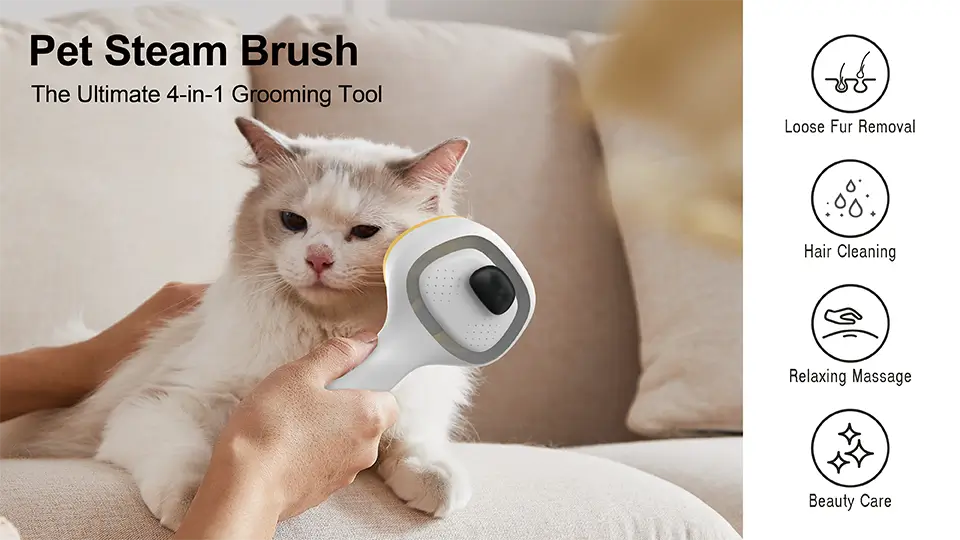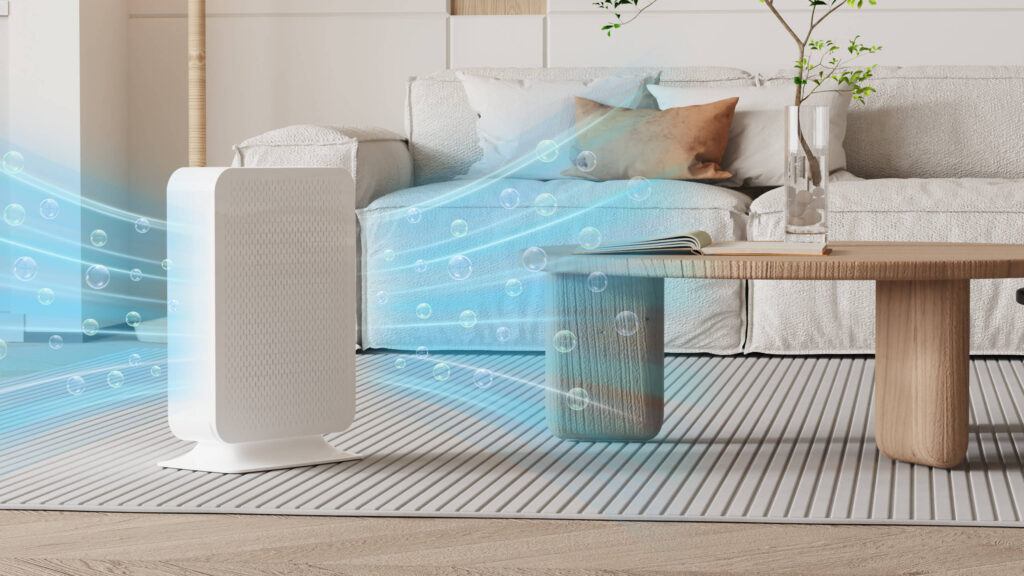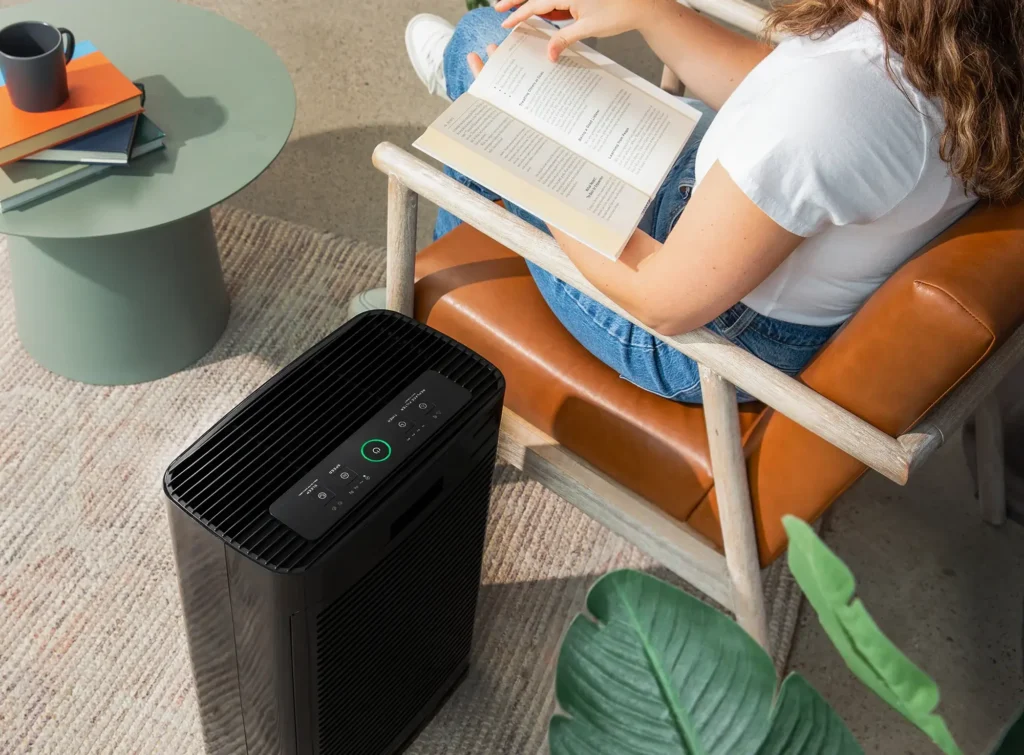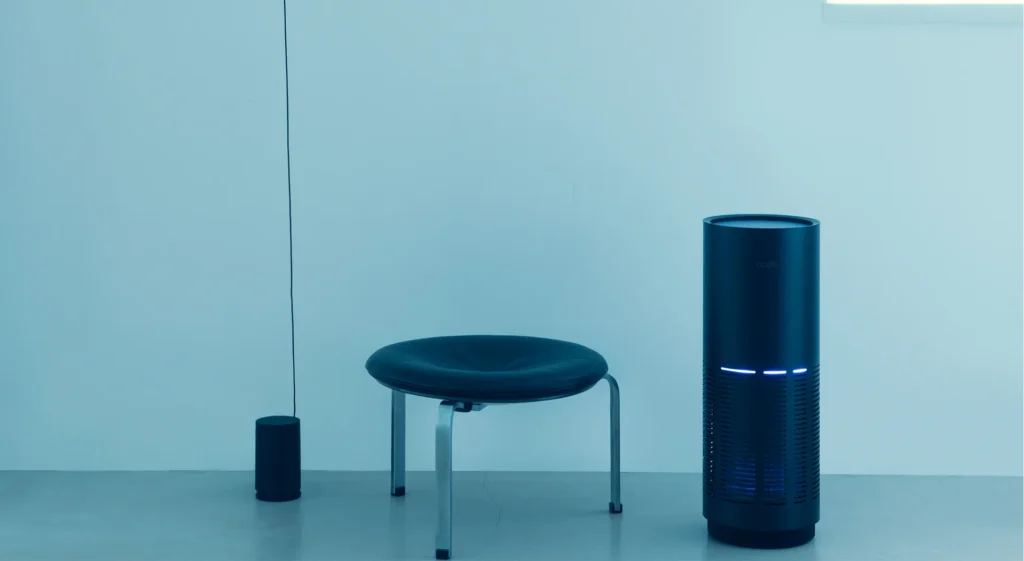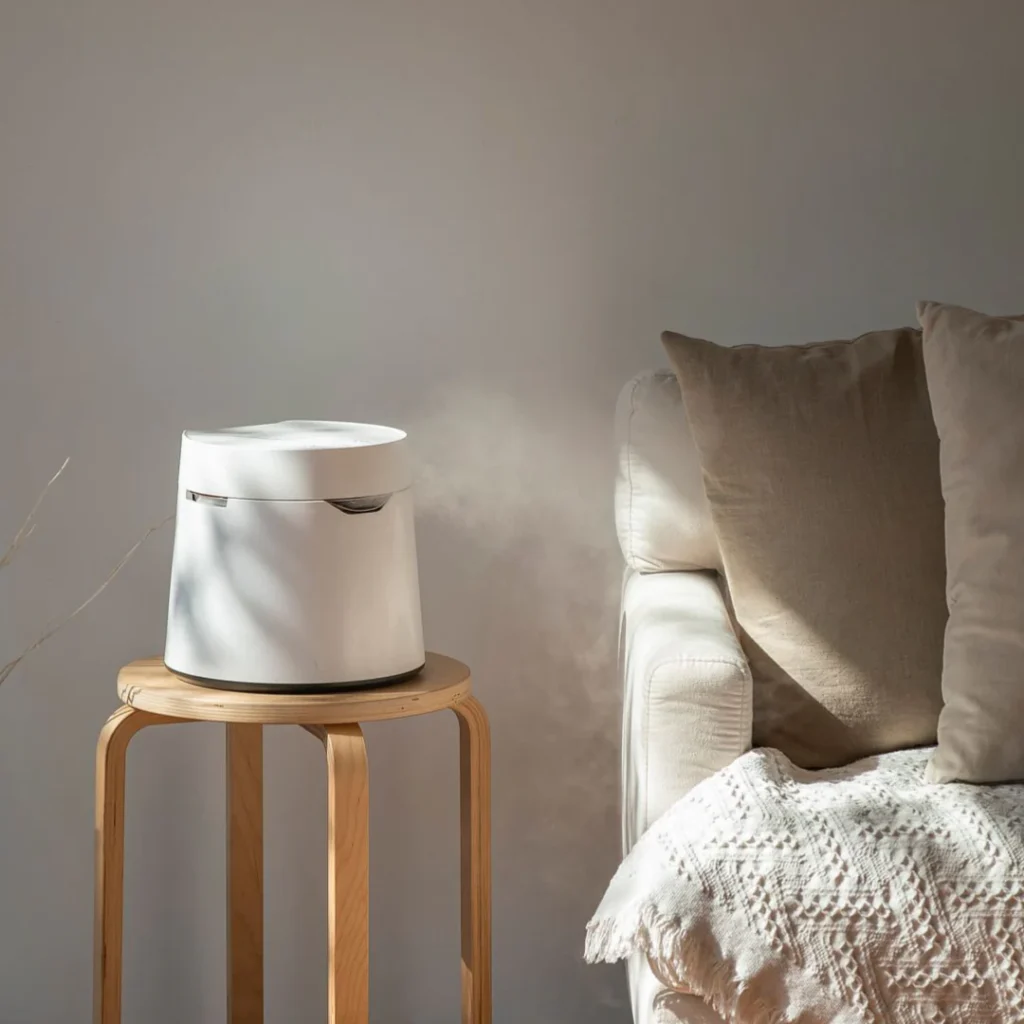La poussière est apparemment inoffensive. Mais une fois que vous connaîtrez ses effets, vous souhaiterez qu'elle disparaisse de votre maison. Heureusement, il existe de nombreux moyens d'y parvenir.
La poussière est l'un des polluants atmosphériques les plus répandus dans les maisons et les bâtiments. Comme elle est abondante et microscopique, il est assez difficile de contrôler sa présence. Même si vous ne résidez pas en zone rurale, la poussière est présente. En fait, les jungles urbaines sont truffées de problèmes liés à la poussière.
Le fait est qu'il est impossible d'éliminer complètement la poussière dans l'air. Il faut faire des efforts rigoureux pour s'assurer qu'elles ne s'installent pas dans votre espace intérieur. Vous pouvez, par exemple, procéder à un nettoyage régulier. Mais votre meilleur espoir est de minimiser la présence de poussière.
Il existe des moyens de réguler la prolifération de la poussière dans vos espaces de vie, comme l'utilisation de purificateurs d'air de haute qualité. Dans cet article, nous allons vous expliquer ces techniques.
D'où vient la poussière ?

Source de l'image : Vecteezy
La poussière dans votre maison provient d'une multitude de sources. Et la poussière de votre voisin peut être différente de celle de votre maison. On peut donc dire que ce contaminant est quelque chose qu'on ne peut pas traiter commodément.
Plus précisément, la poussière est une composition de diverses matières telles que les cellules de la peau, les tissus minuscules et la saleté. La terre attachée à vos chaussures peut se répandre et devenir de la poussière dans votre maison. C'est donc une chose à laquelle vous devez faire attention. Mais en même temps, il y a déjà des sources de poussière dans votre maison, comme les meubles rembourrés, les tapis et les livres que vous rangez sur les étagères.
Même vos animaux domestiques peuvent être une source de poussière. Par ailleurs, la fumée et l'air provenant de l'extérieur peuvent également pénétrer dans votre maison. En outre, il faut savoir que les acariens présents dans votre maison peuvent également accélérer la dispersion de la poussière à l'intérieur. Dans l'ensemble, la poussière est comme un méli-mélo de choses différentes (le plus souvent désagréables).
Est-il normal qu'il y ait de la poussière dans l'air ?
Comme nous l'avons mentionné, la poussière est un contaminant répandu dans l'air. En effet, elle provient de multiples sources. Que vous le vouliez ou non, vous serez sans cesse confronté à ce problème.
At this point, one could say that dust is already a "normal" occurrence. It will always be likely that your home has dust, especially if you don't do regular cleaning. The build-up will always be there.
Ce qui n'est pas normal, c'est que vous laissiez cette poussière proliférer à l'intérieur de votre maison sans mettre en œuvre les mesures qui permettraient de la contrôler. C'est à ce moment-là que les effets de la poussière se font sentir. Un exemple de ces mesures serait l'utilisation de purificateurs d'air ambiant.
La poussière peut-elle être dangereuse ?

Source de l'image : Unsplash
La poussière a un effet néfaste sur notre santé. Les particules de poussière qui flottent dans l'air sont très petites. Elles pénètrent dans nos yeux, notre nez et notre bouche, où elles peuvent provoquer des maladies et aggraver des affections existantes.
De nombreuses personnes sont sensibles à l'exposition à la poussière, car ce contaminant est un irritant pulmonaire. Lorsque vous inhalez de la poussière en grande quantité, vous ressentez une gêne au niveau du système respiratoire. Les personnes allergiques risquent de souffrir davantage de crises d'allergie, surtout si la poussière contient du pollen, des spores de moisissure et des squames.
Dans les cas graves, l'exposition à la poussière peut provoquer des crises d'asthme, dermatiteet des infections bronchiques. Si la poussière contient des produits chimiques, il est probable que vous souffrirez d'autres complications de santé.
Zones communes de votre maison où il y a de la poussière
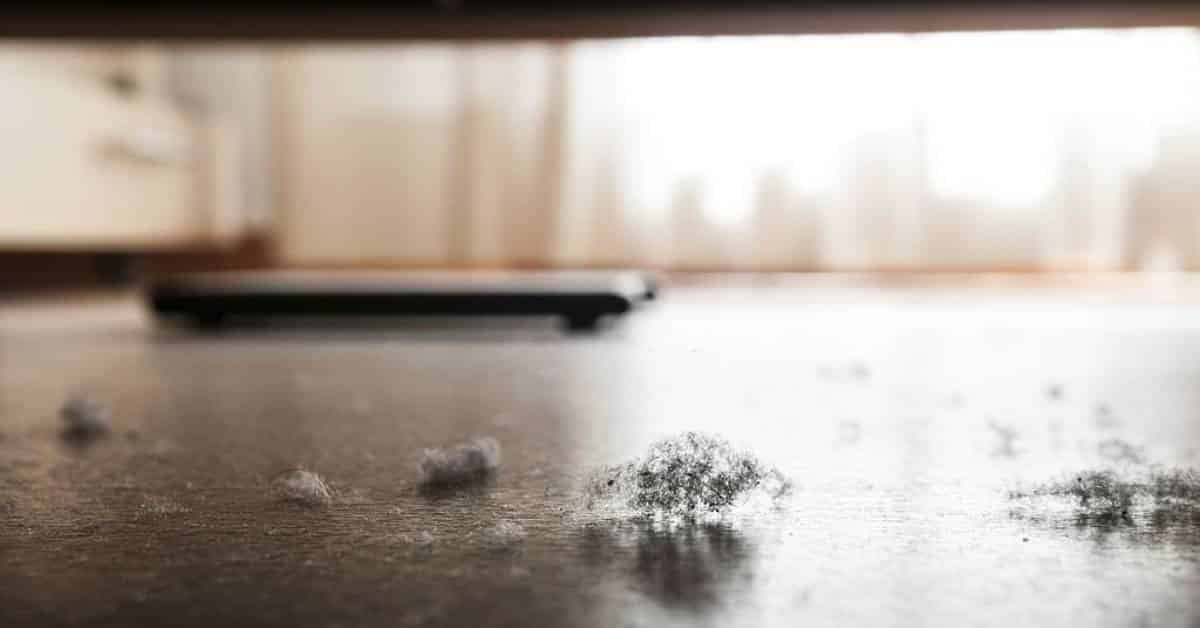
Source de l'image : iStockphoto
D'une manière générale, votre maison est sujette à l'accumulation de poussière. Il n'y a aucune raison de penser qu'une partie est à l'abri de ce contaminant. Mais la plupart du temps, la poussière est couramment présente dans ces zones :
Salles de séjour
Les salons sont toujours confrontés à des problèmes de poussière. Cela s'explique par la forte fréquentation de ces espaces. Les gens y vont et viennent. Il est donc évident que les traces de saleté qu'ils ont apportées seront laissées ici. La proximité des fenêtres et des portes rend également les salons propices à l'accumulation de poussière.
Chambres à coucher
Il est surprenant de constater que les chambres à coucher sont également sujettes à la prolifération de la poussière. Comme nous l'avons mentionné, les acariens peuvent eux-mêmes produire de la poussière par le biais de la saleté qu'ils produisent. Par ailleurs, les chambres à coucher sont également des endroits où le trafic humain est important. D'une manière ou d'une autre, il est donc possible que vous apportiez de la poussière dans cet espace de vie.
Cuisines
Les cuisines font partie des pièces les plus animées de nos maisons. C'est là que l'on mange, que l'on cuisine et que l'on fait la vaisselle. La poussière a toujours tendance à y proliférer. La combinaison de l'activité humaine et des sources naturelles de poussière fait des cuisines l'un des endroits les plus poussiéreux des maisons.
Sous-sols
Si votre maison possède des sous-sols, il est probable que de la poussière s'y accumule. La plupart du temps, les sous-sols sont souvent ignorés. Les propriétaires ne sont pas très enthousiastes à l'idée de les nettoyer. En outre, la ventilation dans les sous-sols n'est pas très bonne. Par conséquent, tout ce qui y pénètre ne disparaît pas. Les murs et les sols en béton finissent par produire des résidus qui se transforment en poussière.
Pourquoi l'épuration des poussières est-elle importante ?
La poussière, bien qu'invisible (la plupart du temps), est un irritant respiratoire. Elle est capable de provoquer différents types de maladies, notamment la toux et la respiration sifflante. La poussière est également néfaste pour les personnes souffrant d'allergiescar il peut facilement déclencher des poussées et des crises d'asthme.
Ces complications liées à la poussière sont l'une des raisons pour lesquelles l'élimination de la poussière devrait devenir une priorité pour chaque ménage. Si vous ne pouvez pas les éliminer complètement, réduisez au moins leur nombre à un niveau plus tolérable. Une gestion efficace de la poussière vous aidera à éviter les problèmes respiratoires qu'elle peut causer.
On peut aussi dire que la poussière peut salir les maisons. Vous ne voulez pas vivre dans un endroit poussiéreux, n'est-ce pas ? Il est donc essentiel d'éliminer la poussière en utilisant des méthodes de nettoyage efficaces.
Ajouter un purificateur d'air pour se débarrasser de la poussière dans l'air

Source de l'image : iStockphoto
L'un des moyens les plus efficaces d'éliminer la poussière dans votre maison est l'utilisation de purificateurs d'air. Ces appareils sont conçus pour améliorer la qualité de l'air intérieur. L'utilisation de purificateurs d'air de haute qualité permet de réduire la présence de contaminants dans l'air.
Découvrez ces purificateurs d'air et voyez comment ils peuvent vous aider à vous débarrasser des problèmes de poussière dans vos espaces de vie.
Pourquoi un purificateur d'air est-il important pour améliorer la qualité de l'air ?
Comme nous l'avons mentionné, les purificateurs d'air peuvent contribuer à améliorer la qualité de l'air intérieur. En fait, la fonction principale de cet appareil est de se débarrasser des divers polluants qui rendent l'air sale, malodorant ou insupportable à respirer.
Les performances de ces purificateurs d'air sont supérieures à celles des aspirateurs et autres méthodes de nettoyage. En effet, ces appareils ciblent directement l'air, c'est-à-dire le milieu où la poussière, les allergènes et les agents pathogènes sont transportés dans toute la maison. Tant qu'il y a un purificateur d'air dans votre maison, l'air que vous respirez est à l'abri de ces contaminants, quelle qu'en soit la source.
Purificateurs d'air pour la poussière
Si vous avez un problème de poussière dans votre maison, il est indispensable d'investir dans un purificateur d'air. Outre l'aspirateur, les purificateurs d'air traitent les contaminants de manière beaucoup plus complète.
N'oubliez pas que la poussière a tendance à flotter dans l'air plutôt qu'à se déposer sur les surfaces. Les purificateurs d'air aspirent l'air dans leur système. Une fois dans le système, les filtres font leur travail en éliminant tous les types de contaminants présents dans l'air. En fait, la plupart des purificateurs d'air sont conçus pour capturer la poussière. Ainsi, une fois ces appareils installés dans votre maison, la poussière ne sera plus un problème.
Cependant, tous les purificateurs d'air n'ont pas les mêmes performances. Dans un instant, nous verrons comment choisir un purificateur d'air pour le dépoussiérage.
Les purificateurs d'air pour les polluants sont-ils sûrs ?
Les purificateurs d'air sont généralement sûrs à utiliser. Ces appareils utilisent un système de filtration testé et éprouvé pour capturer les différents contaminants présents dans l'air. Ils fonctionnent essentiellement sans générer de résidus dans l'air.
Par ailleurs, les purificateurs d'air de haute qualité sont dotés de fonctionnalités supplémentaires, telles que filtres électrochargésafin d'améliorer leurs performances. Encore une fois, cela n'induit aucun contenu nocif dans l'air que vous respirez.
Les seuls purificateurs d'air dont il faut se méfier sont les générateurs d'ozone. Ils génèrent de l'ozone, un composé gazeux censé neutraliser les contaminants en suspension dans l'air. Bien que le concept soit idéal, l'ozone reste un irritant pour les poumons. L'inhalation de grandes quantités d'ozone peut entraîner des problèmes respiratoires. L'Agence pour la protection de l'environnement a d'ailleurs émis une mise en garde contre l'utilisation des générateurs d'ozone.
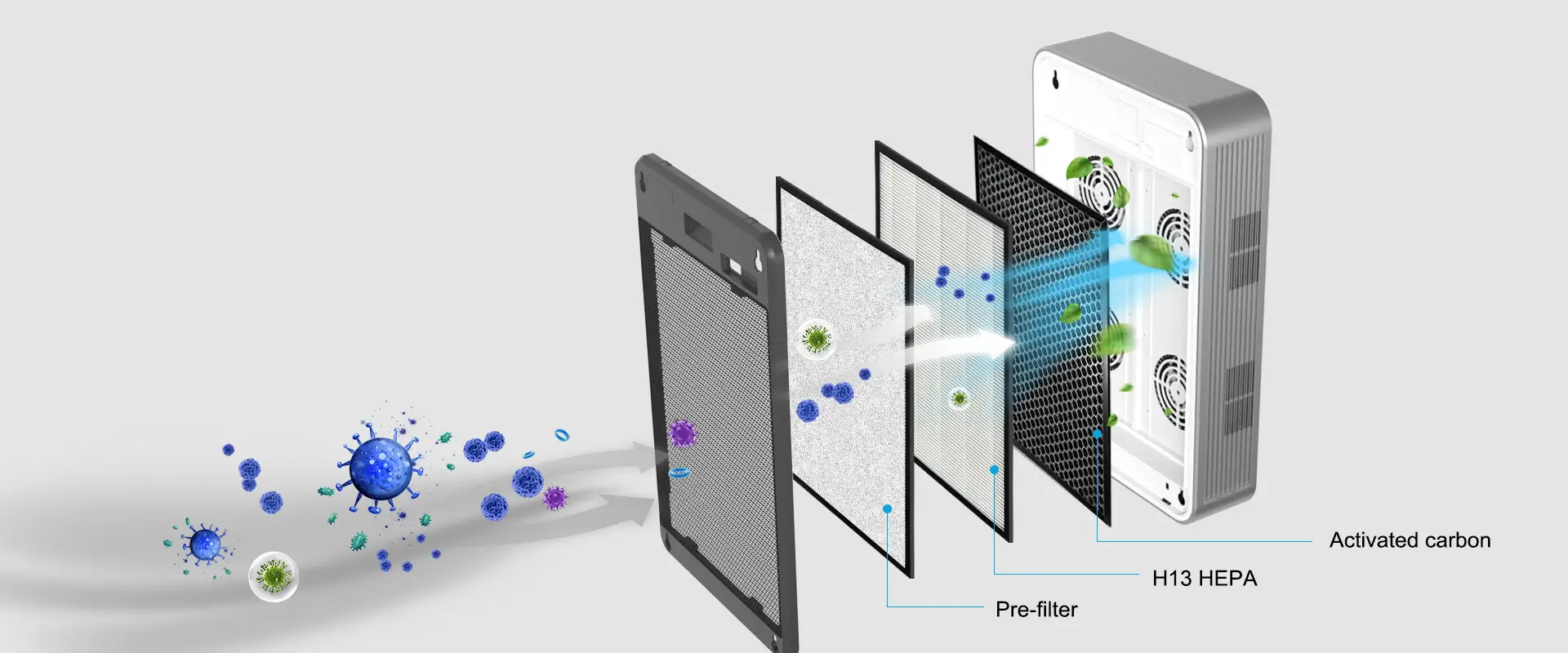
Comment les purificateurs d'air fonctionnent-ils pour éliminer la poussière ?
Les purificateurs d'air standard utilisent des systèmes de filtration pour éliminer les différents contaminants présents dans l'air. Techniquement parlant, ces purificateurs d'air comportent au moins trois filtres : Filtre HEPA, le pré-filtre et le filtre à charbon.
C'est le pré-filtre qui retient les gros débris, tels que les poils d'animaux. Dans certains cas, ils peuvent également capturer les saletés et les poussières si elles sont suffisamment grosses pour être filtrées. Le filtre HEPA, qui traite les poussières microscopiques, est un média spécialisé capable de piéger 99,9 % des particules d'une taille inférieure à 0,3 micron.
En ce sens, les filtres HEPA peuvent éliminer les agents pathogènes et les allergènes. En même temps, ils peuvent également traiter la poussière invisible qui circule dans vos pièces. Quant aux filtres à charbon, ils éliminent les substances odorantes, les produits chimiques et les composés organiques volatils.
Dépoussiérer avec des purificateurs d'air : Pas à pas
Vous trouverez ci-dessous un aperçu du fonctionnement des purificateurs d'air à base de filtres. Le processus est simple mais suffisamment efficace pour garantir la propreté de l'air que vous respirez.
- Le purificateur d'air utilise son ventilateur pour aspirer l'air à l'intérieur.
- Une fois que l'air passe par l'entrée, il traverse plusieurs couches de filtres.
- C'est le pré-filtre et le filtre HEPA qui éliminent complètement la poussière et la saleté de l'air.
- Une fois que l'air a traversé les filtres, il est rejeté dans la pièce.
Ce processus est répété pour garantir que l'air intérieur de vos pièces et espaces de vie reste propre et exempt de particules nocives.
Combien de temps faut-il pour que la poussière se dépose après l'enlèvement ?
Il n'y a pas de réponse concrète à cette question. Nous avons déjà mentionné que les sources de poussière sont presque infinies. Même avec un purificateur d'air, la poussière ne disparaîtra pas tant qu'elle aura la possibilité de pénétrer dans la maison.
C'est pourquoi il est essentiel de veiller à ce que votre maison soit aussi à l'abri de la poussière que possible. Bien que cela semble impossible, il existe des moyens d'y parvenir.
La seule garantie est que tant qu'il y a un purificateur d'air dans votre maison, la présence de poussière sera minimisée. Il se peut même que vous n'ayez plus besoin de nettoyer de temps en temps. C'est un avantage que seuls les purificateurs d'air peuvent offrir.
Mais tous les purificateurs d'air ne fonctionnent pas de la même manière. Dans la section suivante, nous verrons donc brièvement comment choisir un purificateur d'air pour le dépoussiérage.
Éléments à prendre en compte lors de l'achat d'un purificateur d'air pour la poussière
Voici quelques-uns des éléments essentiels à prendre en compte lors du choix d'un purificateur d'air pour le dépoussiérage. Suivez ces conseils et vous obtiendrez certainement un purificateur d'air qui répondra à vos besoins.
- Couverture - Les purificateurs d'air n'ont pas tous la même portée. Certains sont conçus pour les grandes pièces, tandis que d'autres sont limités aux petites surfaces. Assurez-vous que le purificateur d'air que vous achetez est adapté à la superficie de votre pièce. Par exemple, si votre chambre à coucher a une superficie de 400 pieds carrés, le purificateur d'air doit être conçu pour fonctionner dans un espace d'au moins 400 pieds carrés. Plus la couverture est importante, mieux c'est.
- Types de filtres - Vous avez besoin d'un purificateur d'air doté d'un pré-filtre et d'un filtre HEPA. Ces filtres capturent la poussière et les débris. Quelle que soit la taille de la poussière, ces filtres sont capables de la capturer. Un purificateur d'air dépourvu de ces filtres ne vous offrira pas la performance de dépoussiérage dont vous avez besoin pour votre espace.
- Débit d'air pur - Le débit d'air pur (CADR) d'un purificateur d'air indique sa capacité à traiter des contaminants spécifiques : la poussière, le pollen et la fumée. Plus le CADR d'un purificateur d'air est élevé, plus ses performances contre les contaminants domestiques courants, tels que la poussière, sont importantes. D'ailleurs, les purificateurs d'air de grande taille ont des indices CADR plus élevés que leurs homologues.
Comment minimiser la poussière après l'enlèvement ?
Comme nous l'avons dit, il est impossible d'éliminer totalement la poussière dans votre maison, même si vous disposez d'un purificateur d'air. La meilleure solution qui s'offre à vous est de faire en sorte que la présence de poussière soit minimale. Voici quelques moyens d'y parvenir.
-
- Enlevez vos chaussures - La poussière est inévitable, mais vous pouvez en éliminer la plus grande partie en enlevant vos chaussures lorsque vous arrivez chez vous. Les experts recommandent de se déchausser, surtout si l'on vient d'un endroit riche en terre et en salissures.
- Mettre un tapis - Un tapis est un équipement essentiel qui peut empêcher l'entrée de la poussière dans votre maison. Des tapis robustes devraient être placés devant la porte d'entrée afin que les gens puissent s'essuyer les pieds et les chaussures avant d'entrer. N'oubliez pas de les secouer de temps en temps pour enlever la poussière qui s'y est accumulée.
- Changer régulièrement les filtres de la climatisation - Vous devez changer les filtres de votre climatiseur au moins tous les trois mois. Mais vous pouvez espacer les nettoyages si vous estimez qu'il y a trop de poussière dans votre maison.
- Nettoyer régulièrement la literie - Ne pensez jamais que le matelas est à l'abri de l'accumulation de poussière. Au fil du temps, il accumule différents types de saletés : acariens, squames, peaux mortes et autres saletés. N'oubliez donc pas de le nettoyer régulièrement, y compris les oreillers et les couvertures.
- Passer l'aspirateur régulièrement - N'oubliez pas de passer régulièrement l'aspirateur dans vos pièces. Les zones très fréquentées, comme la cuisine et les couloirs, doivent être nettoyées tous les deux jours. Les autres zones doivent être aspirées une fois par semaine.
Autres moyens d'éliminer la poussière dans l'air
La poussière peut constituer un grave danger dans les maisons, provoquant des allergies, des démangeaisons des yeux et d'éventuelles lésions pulmonaires. La poussière se déplaçant très rapidement, il est préférable de garder votre maison aussi exempte de poussière que possible. Voici quelques conseils pour vous aider à faire de votre maison un endroit sûr :
Les soins aux animaux de compagnie sont indispensables
Vous serez surpris de constater que vos animaux de compagnie sont souvent une source de poussière ! Leurs fourrures et leurs peaux mortes génèrent souvent de la poussière. Et si vous ne vous occupez pas correctement de ce problème, vos animaux répandront plus de poussière que vous ne le pensez.
L'un des moyens de contrôler la situation est de garder vos animaux de compagnie propres et bien entretenus. Toilettez-les régulièrement afin d'éviter l'accumulation de poils et de cellules mortes. Bien entendu, le toilettage de vos animaux de compagnie leur permet de se sentir mieux.
Un bon toilettage est indispensable pour les ménages dont les animaux de compagnie sont toujours à l'extérieur. Leurs pieds et leurs pattes sont certainement remplis de terre qu'ils peuvent apporter à l'intérieur de vos maisons !
Faire face à l'électricité statique
Il est intéressant de noter que l'électricité statique se produit à l'intérieur de votre maison sans que vous le sachiez. Elle est souvent présente dans les zones sèches. L'électricité statique attire la poussière et la saleté. De plus, elle fait en sorte que la poussière s'accroche fermement aux surfaces.
Vous remarquerez que l'accumulation de poussière dans les pièces sèches est trop rigide. Cela est dû à l'électricité statique. Heureusement, vous pouvez résoudre ce problème en installant des humidificateurs.
Le rôle de ces humidificateurs est d'ajouter de l'humidité à l'air intérieur, ce qui le rend plus humide. Une fois que vous avez un humidificateur, essayez d'avoir un taux d'humidité compris entre 40 et 50 %. Vous remédierez ainsi à la sécheresse de votre air intérieur, ce qui réduira la prolifération de l'électricité statique.
Dépoussiérez vos tissus d'ameublement
Les fenêtres et les portes constituent l'entrée habituelle de la poussière. Il convient donc d'y prêter une plus grande attention.
L'aspirateur ne doit pas être utilisé uniquement sur les sols. Il faut également passer l'aspirateur sur les rideaux, le canapé et tous les accessoires en fibres souples. La poussière s'y accumule. De temps en temps, vous devez passer l'aspirateur pour vous assurer qu'ils ne souffriront pas de l'accumulation de poussière.
Tant que vous pouvez nettoyer vos textiles, vous effectuez déjà un important travail de dépoussiérage. Et bien sûr, n'oubliez pas de suivre ce régime régulièrement.
Gardez votre maison en ordre
La poussière prolifère souvent dans les endroits où il y a beaucoup de désordre. Plus il y a d'objets dans votre espace, plus la poussière peut se déposer et s'accumuler. Par ailleurs, vous ne saurez jamais si ces objets, tels que les textiles, sont eux-mêmes source de poussière.
Si vous souhaitez un dépoussiérage efficace, commencez par désencombrer vos espaces de vie. Ne remplissez pas votre maison avec beaucoup de choses, sinon il vous sera difficile d'éloigner la poussière. Par exemple, si vous pouvez vous passer de tapis, faites-les enlever de votre espace.
Conclusion
Comme vous pouvez le constater, la poussière est un contaminant difficile à contrôler et à gérer. Elle nécessite l'aide de purificateurs d'air, ainsi que d'autres méthodes de nettoyage, pour éviter qu'elle ne nuise à la propreté de votre maison et à la sécurité de votre santé.
En ce qui concerne les purificateurs d'air, nous avons déjà mentionné que tous les purificateurs d'air que vous voyez n'ont pas la même efficacité. Vous devez acquérir votre purificateur d'air auprès de fabricants réputés tels que HisoAir. Cette dernière est une marque internationale de purificateurs d'air de qualité médicale. Tous ses produits sont conformes aux normes internationales en matière de purification de l'air. Visitez le site HisoAir et voir toutes ses offres.

